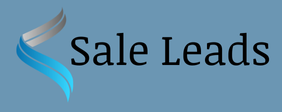Telesales is a core business function. It connects companies to customers. There are two main approaches. These are inbound and outbound telesales. Both methods are vital. They contribute to sales growth. Understanding their unique strengths is key. It helps optimize outreach efforts. This post explores each in detail. It highlights strategies for success.
Mastering Inbound Telesales for Customer Satisfaction
Inbound telesales reacts to customer needs. Customers initiate these vital contacts. They call with questions or requests. Agents offer prompt, accurate support. This builds immediate customer trust. It enhances overall satisfaction. Agents act as expert problem-solvers. They clarify product details efficiently.
These incoming calls are warm leads. The customer shows existing interest. This often leads to higher conversion rates. Agents must listen carefully. They should understand specific customer needs. Empathy is a critical soft skill. It helps resolve issues smoothly. Agents also identify sales opportunities. They can upsell or cross-sell products.
Every inbound call is a chance. It fosters deeper customer loyalty. It also secures potential sales. Agent training is paramount here. They need comprehensive product knowledge. Strong communication skills are essential. A positive attitude always helps. It reflects well on the company.
Strategic Planning for Outbound Telesales Outreach
Outbound telesales is a proactive strategy. Agents initiate contact with prospects. This includes cold calling efforts. It also targets existing warm leads. The main objective is lead generation. It qualifies prospects for sales. Ultimately, it aims to close deals. Agents must be highly persistent. They need sharp sales acumen.
Effective outbound campaigns start with research. Identifying the ideal audience is crucial. Targeted lead lists are indispensable. Agents develop persuasive pitches. They emphasize product benefits clearly. They address specific customer pains. Overcoming objections is a core competency. Agents navigate resistance professionally.
Good lead data fuels outbound success. Businesses must acquire precise contact information. This ensures calls reach relevant prospects. Expanding into new markets also needs data. For example, acquiring country-specific lists helps. A comprehensive database like Vietnam WhatsApp Lead | 1 Million Phone Number Data can empower targeted campaigns. Such data improves conversion rates. It maximizes agent efficiency significantly.
Differentiating Engagement in Inbound and Outbound Telesales
Engagement styles diverge sharply. Inbound calls begin with customer intent. Callers actively seek solutions. They are generally more receptive. Agents respond to existing needs. Conversation flow is customer-driven. This leads to a naturally engaged audience. Rapport builds from problem resolution.
Outbound calls start without prior intent. Agents must quickly grab attention. They create interest from nothing. The sales pitch must be compelling. It needs to show immediate value. Building rapport requires more effort. Agents often face initial skepticism. They must prepare for potential rejection.
Required skill sets also vary. Inbound agents prioritize service excellence. They excel at effective problem-solving. Outbound agents are natural “hunters.” They thrive on negotiation tactics. Both require clear communication skills. Both demand deep product expertise. Their primary focus differs. This impacts daily interactions.
Optimizing Telesales Processes for Peak Performance
Optimizing both channels is crucial. CRM systems are indispensable tools. They manage customer data effectively. They track all interactions and outcomes. This ensures a highly personalized approach. It prevents duplicate inquiries efficiently. Agents access vital information quickly. This improves service quality consistently.
Continuous agent training is non-negotiable. Agents need updated product knowledge. They must refine their sales techniques. Role-playing prepares them for calls. It builds confidence in tough scenarios. Regular feedback drives performance improvement. This leads to higher agent success.
Performance metrics guide strategic decisions. Inbound metrics include resolution time. Customer satisfaction scores are vital. Outbound metrics track calls made. They also measure conversion rates. Lead quality is equally important. Analyzing these data points helps refine processes. It ensures continuous operational improvement.
Advanced Strategies and The Future of Telesales
Advanced strategies enhance telemarketing success. Businesses must constantly refine their approach. This includes specialized areas. Consider government contracting specifically. Learn more about Optimizing GSA Telemarketing: Strategies for Government Contract Success. Such insights drive significant growth. They secure valuable contracts effectively.
Telesales will continue to evolve. It integrates with digital technologies. CRM systems become more advanced. AI assists with lead scoring. Automation streamlines routine tasks. Yet, human connection remains vital. The personal touch still closes deals. It builds strong customer relationships.
Both inbound and outbound approaches are powerful. They serve as complementary forces. Combining them maximizes market reach. It enhances customer experience greatly. Businesses must adapt quickly. They should embrace new technologies. This ensures long-term telesales success. It secures a competitive business edge.
